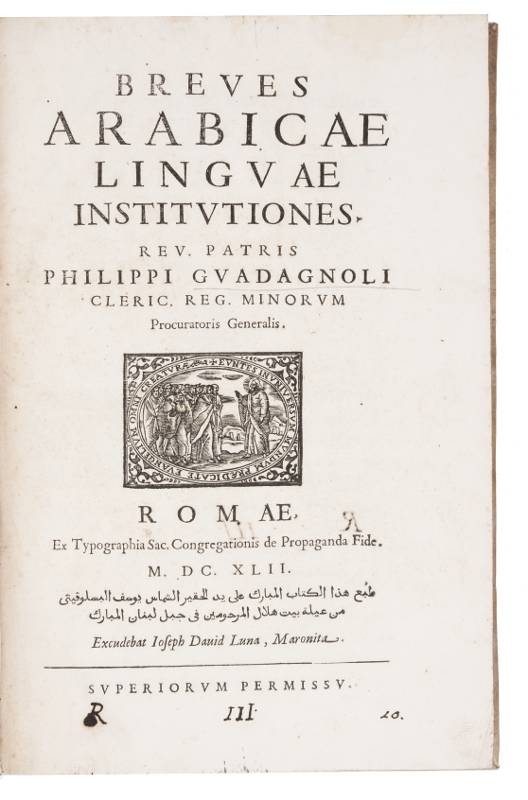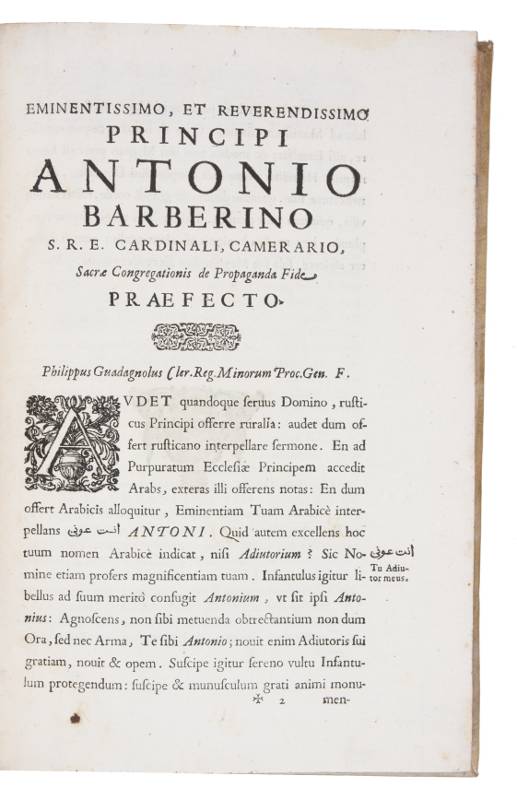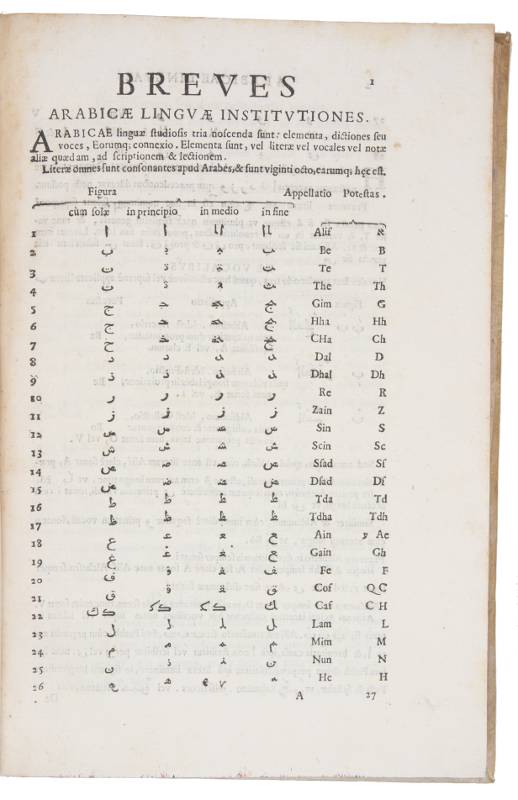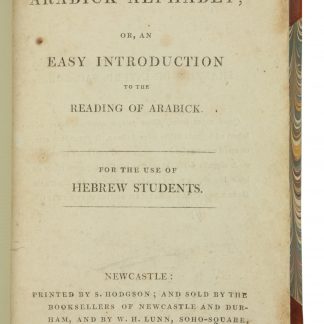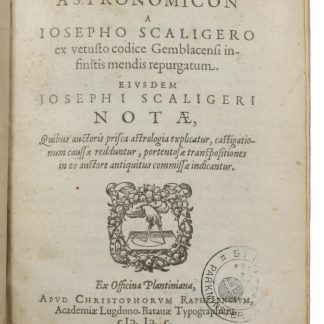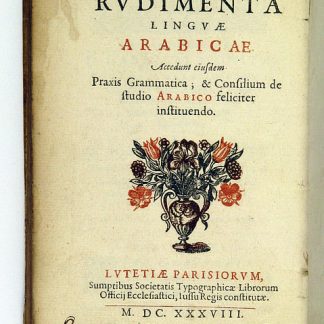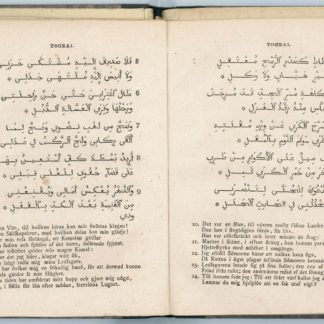Luxurious Arabic grammar, intended for native speakers in spite of the Latin text
Breves arabicae lingua institutiones.
Folio. [12], 349, [1], [2 blank] pp. With the Propaganda Fide's woodcut rectangular Jesus and Apostles device on the title-page, their round Jesus and Apostles device above the colophon, 1 woodcut tailpiece, 2 woodcut decorated initials (2 series), and numerous decorations built up from cast arabesque fleurons. Set in roman, italic and Arabic type with incidental Hebrew. Contemporary sheepskin parchment, sewn on 5 cords (3 secured to the boards, 2 cut flush with the bookblock), headbands worked in pink and white, edges sprinkled pink and blue, manuscript spine title in 2nd of 6 compartments.
€ 12,500.00
First and only edition of Guadagnoli's Latin grammar of the Arabic language, in a luxurious folio format. In 1632 the Propaganda Fide had begun work on an Arabic Bible that was not to be completed until 1671. Guadagnoli (1596-1656) was one of the correctors for the Bible and in the present grammar, set in the same type, he notes that they have taken special care with their Arabic setting and with the metre to suit them to the desires of native Arabic speakers, though the fact that the text was in Latin and the fact that it must have been an expensive book would have limited the audience: it is not the sort of book that missionaries would give away to common people. Erpenius's 1613 grammar, revised and reprinted several times, was aimed primarily at European scholars. The main text opens with a table of the letters, showing (from left to right!) the stand-alone, initial, medial and final forms, along with the name of each letter and its pronunciation. This gives an overview of the new Arabic Bible type. The texts used as examples include the first printing of two poems taken from manuscripts in the oriental library collected by Pietro della Valle (1586-1652) in Rome: the "Carmen Chazregiacum" and the "Carmen de invocationibus". The Arabic type may have been cut by the Propaganda Fide's in-house punchcutters for their Arabic folio Bible, whose Pentateuch was printed from 1632 to 1635 but distributed only in proof copies until the complete Bible was published in 1671. Occasional lines appear in their other books from 1636, but the present book uses it for the main Arabic text. It was to become the staple of their Arabic printing. The book also gives a nice synopsis of the Propaganda Fide's large Hebrew type (6 mm mem-height).
With early manuscript shelf-marks in ink at the foot (R III 20) and on the back (R III 8) of the title-page. Most of the sheets have browned patches or browned spots, but otherwise in very good condition and with generous margins. Binding very good, with only minor wear and a couple small abrasions. An important Arabic grammar intended for native speakers.
Amaduzzi, p. 11; Schnurrer 72; Smitskamp, Philologia orientalis 220.

